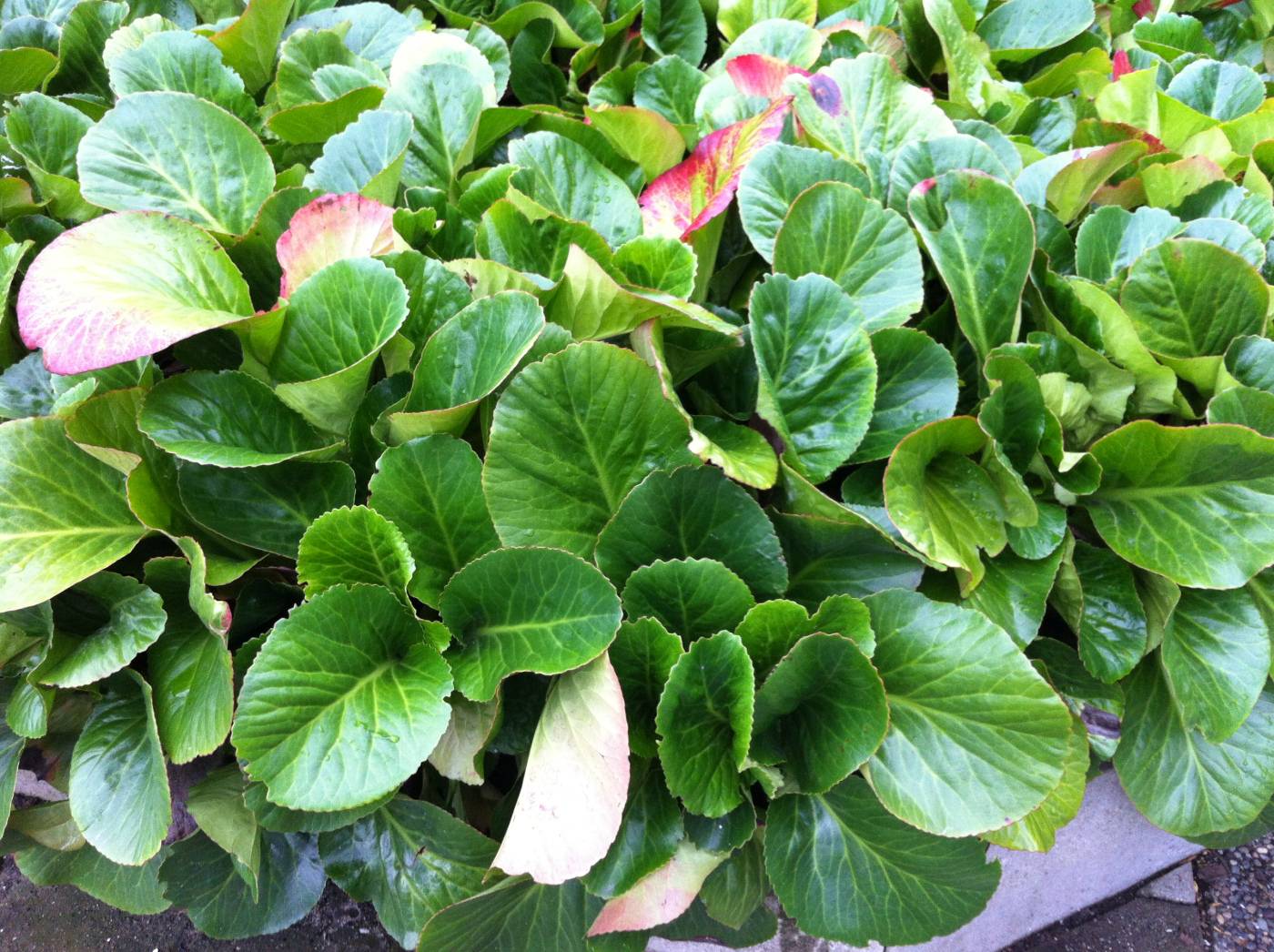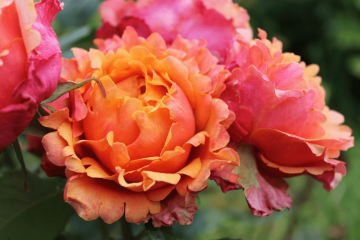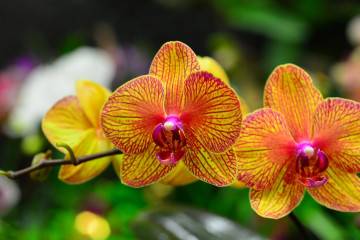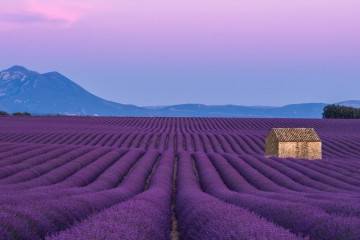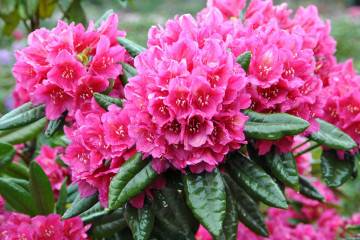Big-leaved badan (bergenia crassifolia)
Content:
- Description and distribution area
- Badan: planting and care
- Propagation of thick-leaved bergenia by cuttings and seeds
- Plant cultivation
- Economic value and application
- The chemical composition of the plant
- Application in official and traditional medicine
- Traditional medicine recipes
- Badan - contraindications for use and side effects
- The use of thick-leaved bergenia in other areas
Badan thick-leaved is used not only as an ornamental plant to decorate garden plots, but also used for medicinal purposes. The compact plant with pink flowers contains many different medicinal substances in its composition and is easily grown in mid-latitudes.
Description and distribution area
The evergreen thick-leaved badan, the family of which is called Saxifrage, has the exact Latin name - Bergenia Crassifolia. The plant was named after its discoverer - German botanist Karl August von Bergen. Other names are Mongolian tea, thick-leaved bergenia, thick-leaved saxifrage.
In terms of its description, thick-leaved bergenia is similar to other types of bergenia. The evergreen shrub does not grow more than 50 centimeters in height. Large dark green leaf plates are on long petioles and are collected at the base of the roots in rosettes. The shape of the leaves is round, sometimes resembling the shape of a heart with large denticles along the edge.
The stems are thick and bare, without leaves. Creeping roots, have a large number of root buds. The roots can be up to several meters in length. Small pink flowers are collected in dense panicle inflorescences.
Badan: planting and care
Badan is planted in the fall in loose alkaline soil. Dig a large hole and place the rhizome in it. Then they cover it with a prepared substrate of peat, sand, humus and light earth. After tamping, you can mulch with gravel or sawdust.
In the spring, rotted leaves and stems are removed and mineral fertilizers are applied. After 2 weeks, the plant is fed again. The first watering is carried out during the flowering period, then the bush is periodically watered every two weeks.
Propagation of thick-leaved bergenia by cuttings and seeds
Badan reproduces in almost all known ways. The most commonly used are cuttings and seeds.
Cuttings should be propagated closer to autumn, after the buds have faded. To do this, a rosette is separated from an adult bush and planted in the ground to a depth of no more than 3 centimeters.
The seeds can be grown as seedlings, or they can be immediately planted in open ground. As soon as shoots appear, the shoots are transplanted to the required places.
Plant cultivation
Many types and varieties of badan are cultivated by gardeners, thick-leaved is no exception.
The plant is grown specifically for use in medicine and the production of caring cosmetics. Due to its resistance to disease and frost, the culture is cultivated even in regions with a harsh climate.
Economic value and application
In the household, not rhizomes are mainly used, but the leaves of the bush. The leaves are dried and made into breasts and teas. Raw berry thick-leaved is used as a remedy for pain and inflammation. Housewives use it externally for the healing of wounds and purulent inflammation of household members. Rinse the mouth with a decoction of the herb.
How to collect, procure and store raw materials
The roots are harvested from June to July. They are thoroughly washed and divided into 5-centimeter pieces. Then they are laid out in a room with good ventilation for drying.
The leaves are harvested in July. Leaves are cut to rosettes and dried in a dark and dry room. After drying, you can grind the raw material into small pieces (like a tea brew). The collection should be stored in a ventilated, cool and dark place in cardboard containers.
The chemical composition of the plant
Bergenia contains a high level of tannins in the roots and leaves. Also, the plant contains:
- tannin;
- hydroquinone;
- gallic acid;
- arbutin;
- bergenin;
- resin;
- starch;
- manganese;
- zinc;
- copper.
Application in official and traditional medicine
Badan is used in both traditional and official medicine. For treatment, the ground parts of the bush are used: leaves, flowers and stems, as well as rhizomes.
Application of leaves and roots of thick-leaved bergenia
Badan for medicinal purposes is used internally in the form of infusions and decoctions, and also externally rinses with a solution. It helps fight the following ailments:
- inflammation;
- wounds and scratches;
- disorders of the genitourinary system;
- deterioration of the vascular condition;
- high blood pressure;
- disruption of the gastrointestinal tract;
- weak immunity;
- nervous conditions;
- stomatitis and periodontal disease;
- flu, runny nose, cold;
- bleeding and disease;
- diseases of the female reproductive system.
Traditional medicine recipes
In order to prepare an infusion for rinsing the mouth and mouth, brew 2 teaspoons of crushed dried leaves of bereginia in a glass of hot boiled water. After 30 minutes of infusion, the solution must be filtered.
The description of the recipe for a decoction of dysentery bacilli is as follows: 2 tablespoons of raw materials and a glass of hot water are kept in a water bath for half an hour. After filtering and adding a little boiling water.
To prepare the extract, for external use, brew 3 tablespoons of dry bergenia with a glass of hot boiling water and evaporate the solution over low heat. This extract must be filtered before use.
Collection of a cold
Collecting from the leaves of bergenia thick-leaved, elecampane and St. John's wort helps well from the common cold. A tablespoon of a mixture of herbs is brewed in a glass of boiling water and a quarter of a glass is consumed 2 times daily.
Gastrointestinal diseases
For diseases of the stomach and intestines, an extract from the roots of badan is used inside. 3 tablespoons of raw materials with a glass of boiling water are evaporated over low heat. Every day you need to take at least 25 drops of the finished medicine.
Badan - contraindications for use and side effects
In addition to the beneficial healing properties, the use of bergenia internally and externally has many contraindications. You can not use infusions and decoctions of badan for people with the following ailments and diseases:
- individual intolerance, allergies;
- constipation;
- thrombosis;
- increased blood clotting;
- tachycardia.
The use of thick-leaved bergenia in other areas
Brown dye is obtained from the leaves of thick-leaved bergenia, which is used both on the farm and in various industries.
In addition, on the basis of extracts and infusions of bergenia, caring cosmetics are produced.
Thick-leaved badan, the description of which differs only in the color of the flowers, is a universal remedy for almost all diseases. In addition, the flower will decorate any garden with its decorative foliage and bright flowers.


